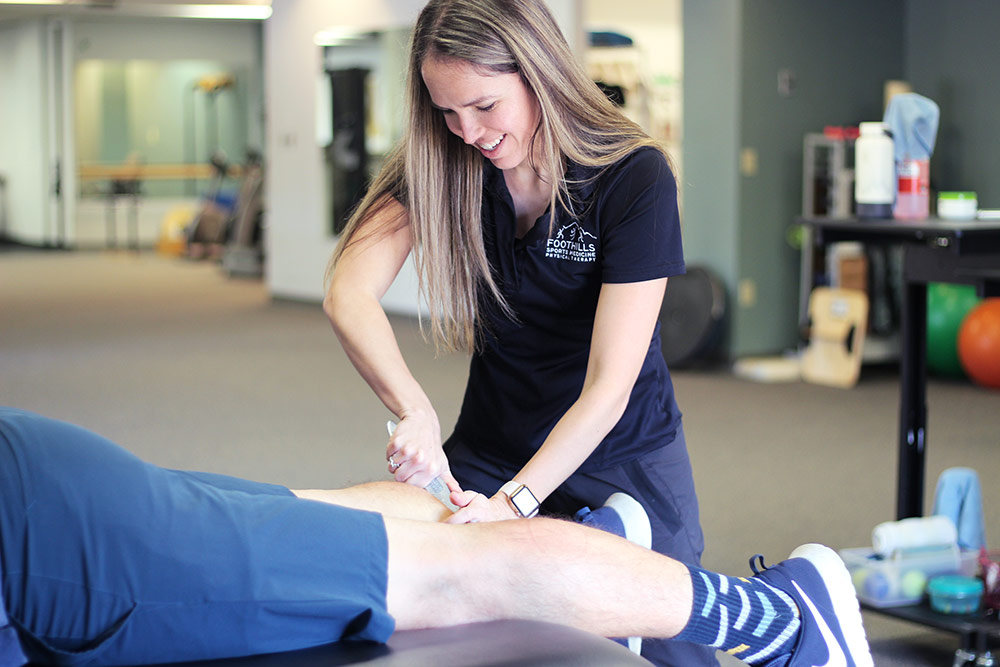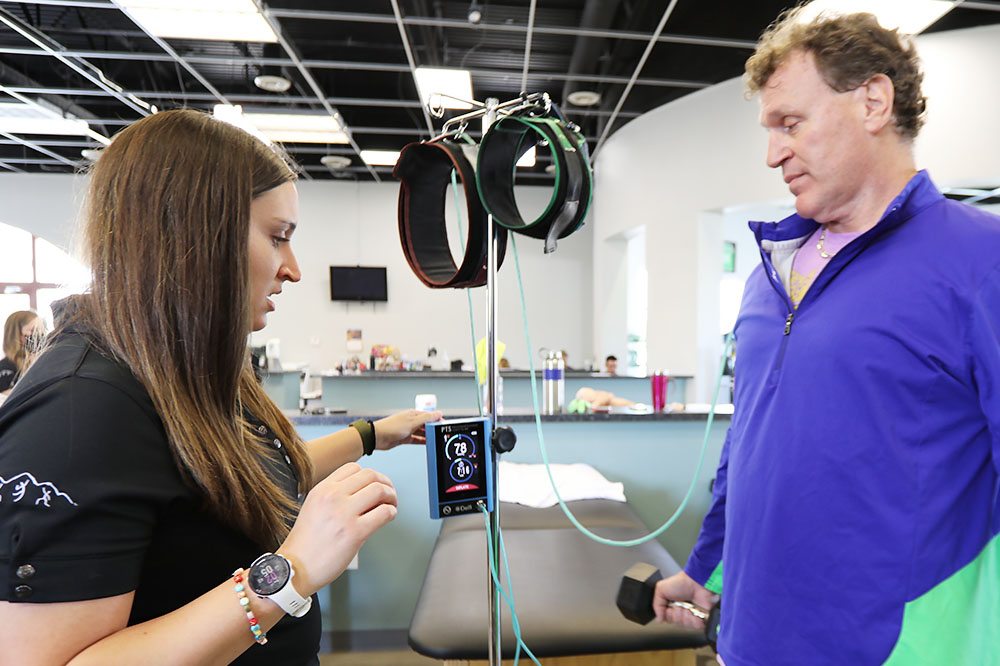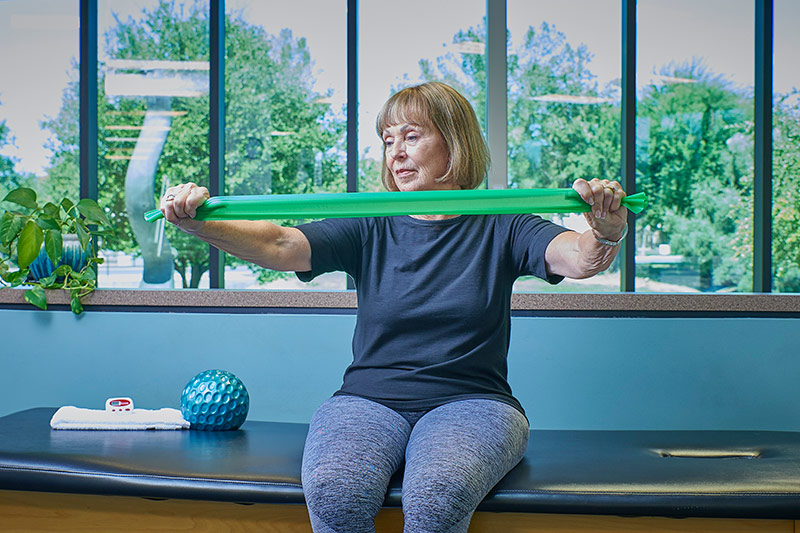by Renee Lambeth, PTA | Arrowhead Location
While surgery may be necessary to treat a medical condition, it can significantly impact your body. Even if everything goes according to plan, you may experience pain, joint stiffness, muscle weakness, and even the risk of more severe complications. However, prehabilitation (prehab) before surgery offers a way to mitigate these risks and optimize your recovery.
Post-operative rehabilitation is typically recommended to help return you to your pre-surgical condition more quickly. Surgical prehabilitation is a way to improve your physical fitness before surgery to reduce the risk of complications and improve the chances for a better outcome.
Prehab is intended to boost your physical fitness so your body is healthier after surgery. The goal is an easier recovery and a higher likelihood of full functionality.
What Does a Prehabilitation Program Involve?
The general goal of prehabilitation is to improve your mental outlook and physical stamina before the procedure. To reach those goals, the approach taken toward prehabilitation may include the following:
- Training exercises
- Improving cardiovascular health and muscle tone through physical activity
- Improving diet
- Modifying lifestyle habits, e.g., reduced alcohol consumption and smoking cessation.
Prehabilitation may also involve interventions that typically only occur following the procedure. For example, you may start learning strengthening exercises during recovery or receive training on assistive devices, such as crutches or a walker.

Research shows that certain types of exercises are particularly effective at increasing functional capacity before surgery:
- Brisk walking
- Deep breathing exercises
- High-intensity interval training
- Jogging
- Joint- or muscle-specific training
- Weightlifting
Like every other physical therapy program, each prehabilitation program is individualized to the patient’s needs. For example, if your physical fitness level is low, to begin with, your therapist will perform a program consisting of exercises that are within your ability to function. Your therapist may design a more challenging prehabilitation program if your baseline fitness level is higher.

Common Conditions of Prehabilitation Cases
- ACL & MCL reconstruction
- Meniscectomy & meniscal repair
- Total knee arthroplasty
- Total hip arthroplasty
- Total shoulder arthroplasty
- Rotator cuff repair
- Spinal surgery
- Hand & wrist
“Prehab before surgery can decrease pain, reduce inflammation, improve blood flow in the area, strengthen muscles supporting the joint, and allow a greater range of motion. This provides the optimal environment for the body region to heal following surgery. The better the body region functions before surgery, the stronger and faster your recovery will likely be after the operation. This leads to improved patient outcomes and satisfaction.” Ted Carter, PT, DPT, OCS, TPS, CSCS, Cert. TDN
Preparing the Body by Increasing Range of Motion
In prehab, patients are given various exercises that will improve function. Some exercises will increase the range of motion. Increasing the joint range of motion prior to a surgical procedure makes the restricted joint capsule more tolerant of movement, and the surrounding tissues will lengthen, allowing the joint to move more freely. When the body is prepared prior to surgery to move as it should, it will be more prepared for movement once the procedure has been performed. Strength and flexibility are also emphasized during prehabilitation. After surgery, muscle mass and function are lost. When patients perform exercises that improve function prior to having surgery, their ability to regain that function is typically more remarkable after the procedure.
Typically, prehab can range from two to six weeks and may even be requested by your surgeon. Depending on the patient’s availability and needs, a home exercise program may be prescribed after exercises are established and you can perform them correctly. Performing exercises before the surgical procedure will improve outcomes and drastically improve a patient’s pain during the healing process.

Will I Still Need Rehabilitation After Surgery?
Prehabilitation does not remove the need for rehab following your procedure. However, it may decrease the amount of time you have to stay in rehab.
Prehab was initially developed to improve outcomes for patients undergoing orthopedic surgery. Over time, it was discovered that it also had positive implications for people undergoing other procedures. While there is no guarantee that people who undergo surgical prehabilitation will not experience any complications during surgery, it may help overcome any difficulties one may experience when the body is healthier and more fit.
The Rising Cost of Healthcare
The very thought of having surgery can be terrifying. With the rising cost of healthcare, many of us face high deductibles and hefty co-payments. When we multiply this cost over multiple visits, it can add up and force some of us to deal with the daily pain until the function is lost. What if there was a way to shorten your therapy duration? What if, by performing what is known as prehabilitation, you could ease the entire process and improve your outcomes after and even before surgery?
Prehabilitation, or prehab, offers several benefits for patients facing injuries and planning to have a surgical procedure. It is a chance to regain control and improve your quality of life. According to several studies, people who participate in prehab can shorten hospital stays, decrease overall rehabilitation duration, and improve outcomes. In addition to these benefits, prehab can also have emotional benefits: patients will enhance their understanding and knowledge of what to anticipate after surgery.
If you are prepping for an upcoming surgery and are interested in a prehabilitation program, don’t hesitate to request a free injury assessment or schedule an appointment at one of our locations in the Phoenix area.
Prehab before surgery is similar to rehab for injuries; a physical therapist walks you through an individualized exercise program to help strengthen and heal. Prehab gives you the ability to improve your post-surgical outcomes and decrease your overall time spent in therapy. Make an appointment to find out how we can help ease the stress and worry you might have about an upcoming procedure.




